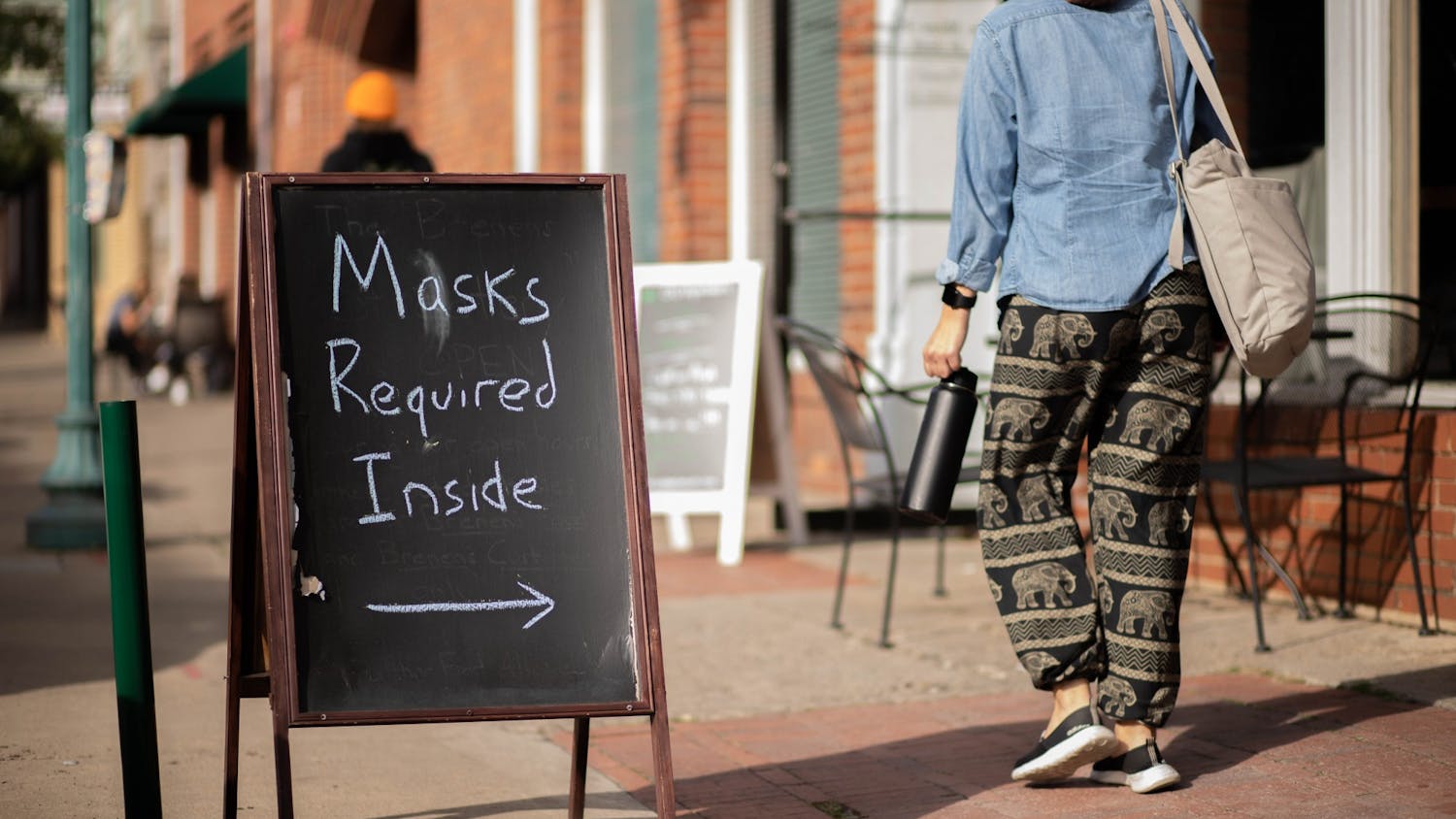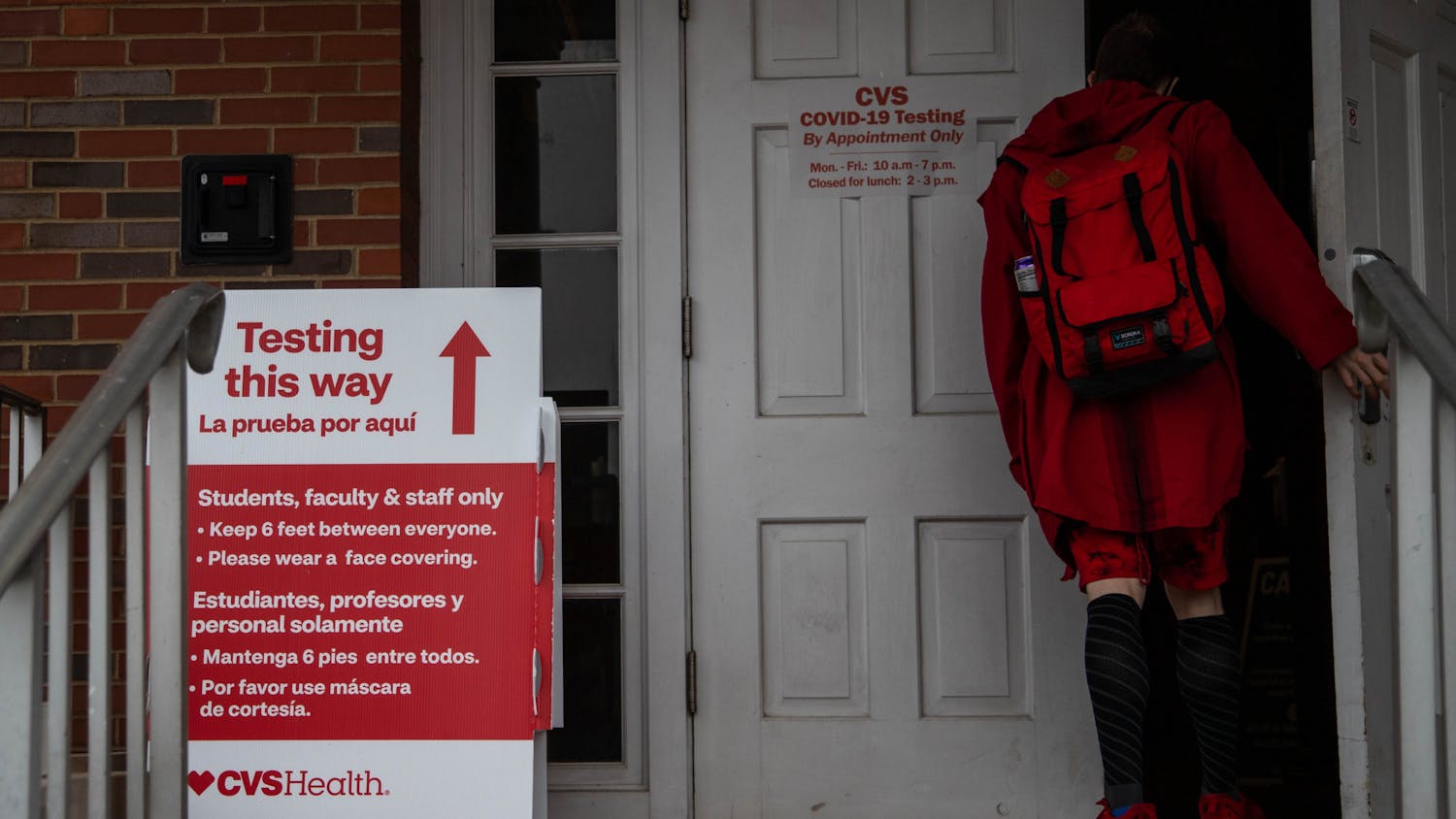Masking guidelines implemented by Ohio University at the beginning of March remain in effect since students have returned from spring break.
On March 1, OU changed its masking requirements to align with updated guidelines from the Centers for Disease Control and Prevention, or CDC. According to a previous Post report, the university no longer requires masks in non-classroom settings on most of its campuses
James Gaskell, commissioner of the Athens City-County Health Department, said the CDC recently changed the requirements to eliminate masking from 50 cases per 100,000 people to 200 cases per 100,000 people.
Athens County is currently on a decline regarding its number of COVID-19 cases since January 23, when there were over 1522 positive cases in a week. Between March 15 and Tuesday, there have only been 30 cases, Gaskell said.
Due to the consistent decline in the number of COVID-19 cases, OU no longer requires students to get weekly asymptomatic tests, which went into effect March 21, OU spokesperson Carly Leatherwood said. Instead, the university is asking students to complete asymptomatic testing based on potential exposure regardless of their vaccination status.
However, with students back at OU from spring break, there are concerns regarding those who chose to travel over the break potentially bringing the virus back to campus.
Emma Buswell, a freshman studying history, is worried by the number of students who traveled during the break not having to wear masks upon coming back to campus.
From Gaskell’s perspective, with the decreasing infection rate, there is little chance of a surge in cases due to travel during spring break.
“It's possible that we won't have a surge in cases because, in general, throughout the nation and the states, infection rates are way down,” Gaskell said. “That's the optimistic hope that indeed we won't have a surge in cases despite travels that occurred during spring break.”
Buswell has felt uncomfortable being on campus since the policy of masking requirements has been limited to classroom settings only.
“Yesterday I was walking in Baker and somebody coughed right in front of me and I had to walk through it,” Buswell said. “(They) coughed without a mask on and didn't cover their mouth or anything.”
Due to how unpredictable the virus has been, the health department has to be prepared for when new mutations appear.
“About the time we take our guard down, another variant comes along and we have to reinstitute some of our mitigating procedures,“ Gaskell said. "So, there's a little concern it could happen again.”
OU has heard feedback both in favor and against the new masking policies, but in general students, faculty, and staff have been appreciative of the relaxed masking requirements, Leatherwood said.
With the high vaccination rate and hopes of herd immunity, there is very little chance that masking will be required to the same extent as it was at the beginning of the academic year.
“We're getting fairly experienced at doing this, although it'll be very difficult to get people to mask up; they're anxious for the pandemic to be over,” Gaskell said. “We won't completely get rid of COVID-19 but we will learn to live with it so that we won't have huge surges in disease.”






